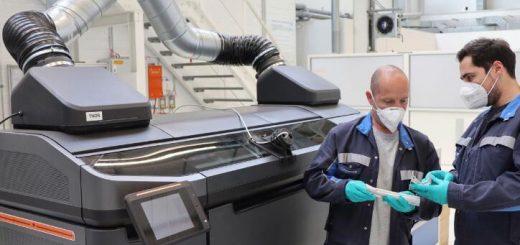From Aircraft Wings to Space Components: Designing 3D Printers
The world of 3D printing is moving fast and the possibilities are limitless. Here, Haruhiko Niitani, senior vice president and chief business officer of Mitsubishi Heavy Industries Machine Tool Company, talks about some of the latest developments.
 Image via SPECTRA
Image via SPECTRA
Q. Your innovative design has transformed the 3D metal printing industry. Can you tell us what’s different?
The key to the design is the monitoring system, which is important to guarantee the quality of the finished component. In most machines, it’s easy to measure the size and shape of a printed component, but the only way to check the manufacturing integrity is to break it open, which is self-defeating.
Our unique system monitors the printing process in real time. The system analyzes feedback and automatically adjusts the melting point to guarantee structural consistency.
Clients can access a complete record of the printing process giving full product traceability down the line.
Q. How does the new technology work?
The printer’s unique sealing nozzle lets us manufacture components of any size quicker than powder bed fusion (PBF) printers. Our system – called Direct Energy Deposition or DED – feeds metal powder through the nozzle, which is then fused together and solidified using a laser beam.
The sealing nozzle creates a low oxygen atmosphere at the melting point to prevent oxidization of the melted metal. This removes the need to print in a low oxygen chamber and enables us to manufacture any component from small parts to entire aircraft wings, and beyond.
Q. Can this technology be used anywhere?
The technology is so new that legislative standards relating to quality, such as the ISO system, don’t yet exist for components manufactured using our new printer design. While we can produce any size and shape of component, what is produced must comply with each country’s official specifications, which regulate the materials used and their properties.
This process is underway, and we expect the first regulatory standards to be applied at the earliest feasible time, which will enable our clients to alter their product designs.
Q. What are the main applications for the technology and are there any market barriers?
As the printer can use any type of metal, or combination of metals, the opportunities are endless.
Initially the new printer will manufacture commercial airline parts and components for space programs.
Once the technology is scaled up and costs fall in line with traditional manufacturing techniques, we will look to 3D print components for automobiles and other commercial sectors.
It’s important to note that what we have created is interlinked with the Japanese concept of Monozukuri, which involves striving to achieve perfection in manufacturing. And this spirit and philosophy drives all the work we do.
Source: SPECTRA




Recent Comments